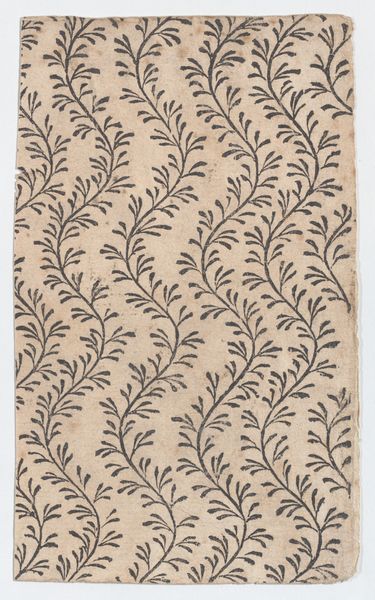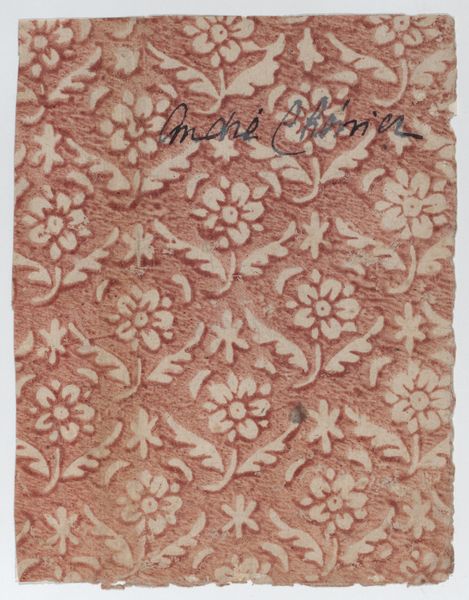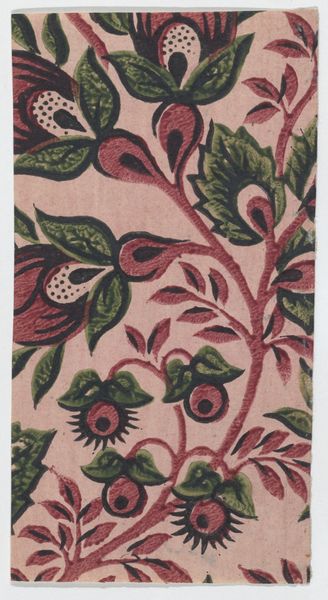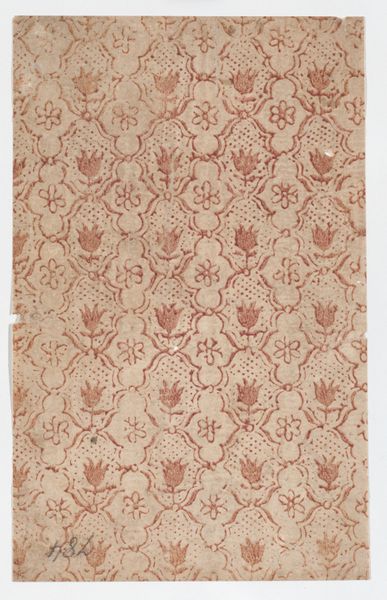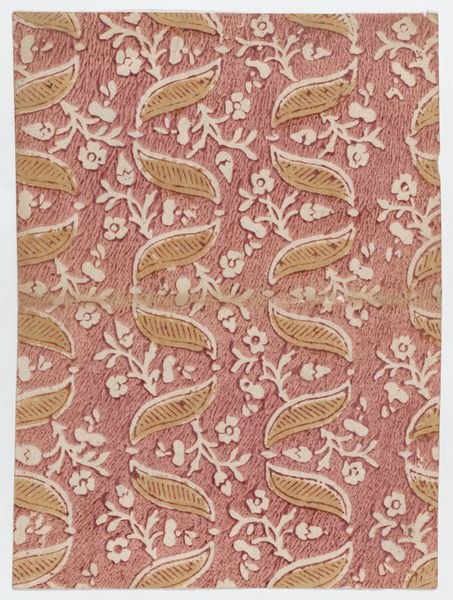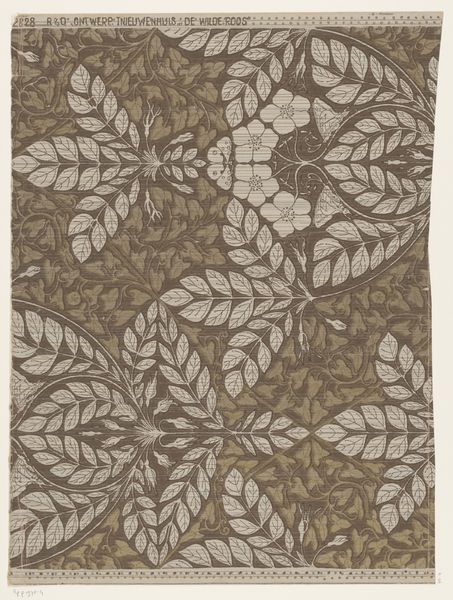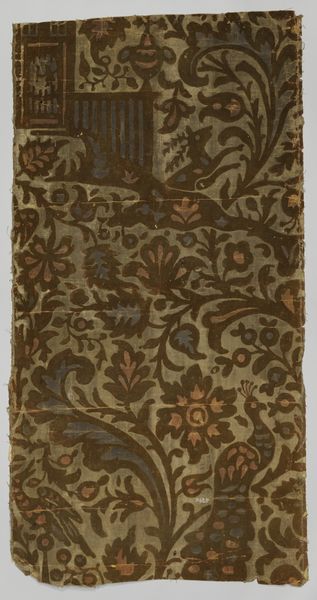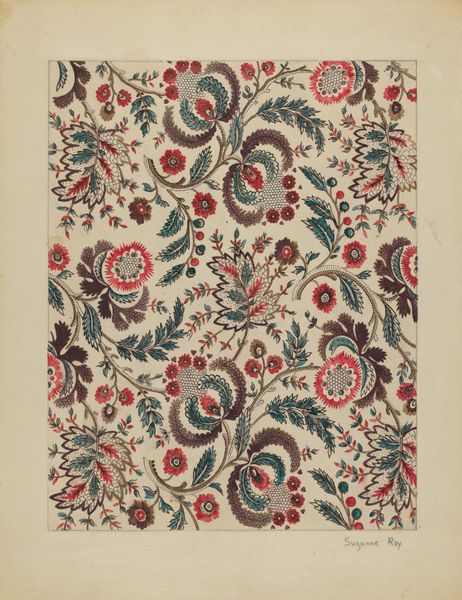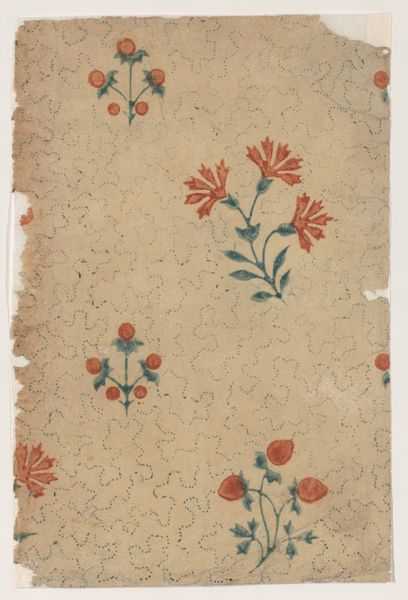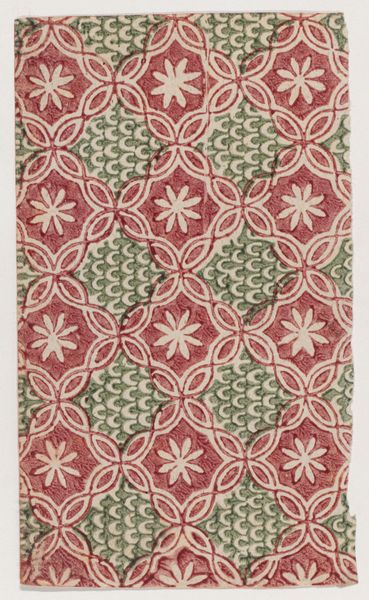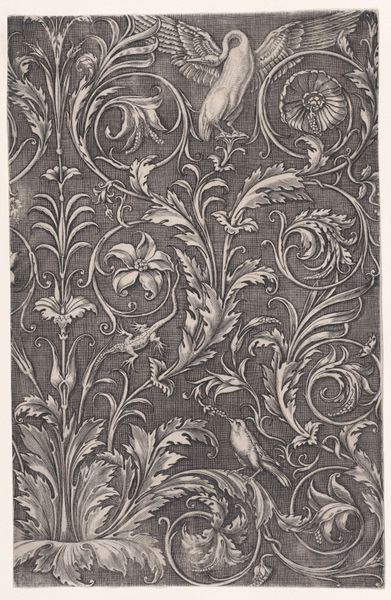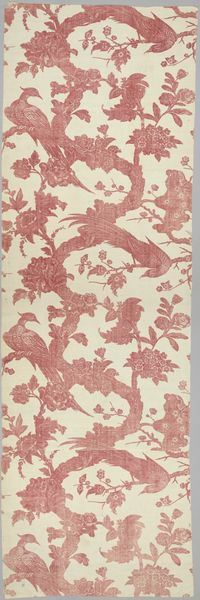
drawing, print, woodcut
#
drawing
# print
#
pattern
#
linocut print
#
romanticism
#
woodcut
#
decorative-art
Dimensions: Sheet: 7 3/16 × 4 3/4 in. (18.3 × 12 cm)
Copyright: Public Domain
Curator: This artwork, titled "Sheet with overall vine and dot pattern," dates back to sometime in the 19th century and is currently held at the Metropolitan Museum of Art. It's a striking example of decorative art, blending drawing and printmaking techniques. Editor: Well, right off the bat, I find it strangely comforting. Like looking at wallpaper from a dream. The little dots sort of vibrate, and the vines…they're dancing, but in a slow, elegant way. Curator: Exactly. It’s fascinating how a seemingly simple design can evoke such emotion. These patterns were more than just decorative; they reflected broader societal ideals of order, nature, and even class. Think about who would have commissioned and consumed this type of decorative art. Editor: I hadn't thought about that! Who indeed? Probably someone wanting to convey refinement, gentility… almost like they are domesticating nature itself by reducing the natural world to a repeatable pattern! Curator: Absolutely. And while it might appear 'gentle' now, let’s also consider the context of its creation. The materials, the labor... how did the rise of industrial printing techniques change the socio-economic structures of production? The romantic aesthetic of this style papers over other material realities. Editor: That adds another layer, a darker layer maybe, to what I initially saw as purely charming. I'm picturing rows of workers, meticulously repeating the design… Curator: Precisely. So, while the image presents this harmonious image of delicate vines and dots, it's embedded within power structures that influenced its production and circulation. Also consider the Romanticism period during which it was conceived—it presents this fantasy of natural harmony that often served to further obfuscate societal ills. Editor: It is almost like there is a story baked into each repeat of the vine and dot motif, now that you mention it. I appreciate that something that feels simple contains these incredible layers. I'll never look at wallpaper the same way. Curator: I find that it speaks volumes about the hidden histories embedded within everyday objects. Editor: Absolutely. I wonder if, someday, people will examine *our* patterned objects and consider our context too? Hmm. Makes you think.
Comments
No comments
Be the first to comment and join the conversation on the ultimate creative platform.
